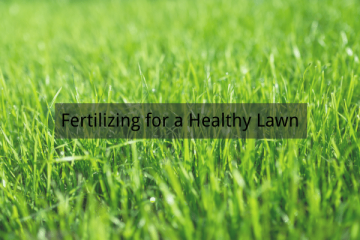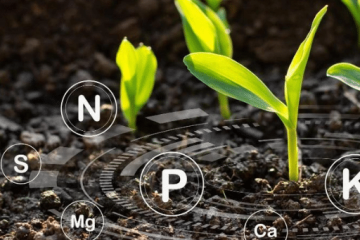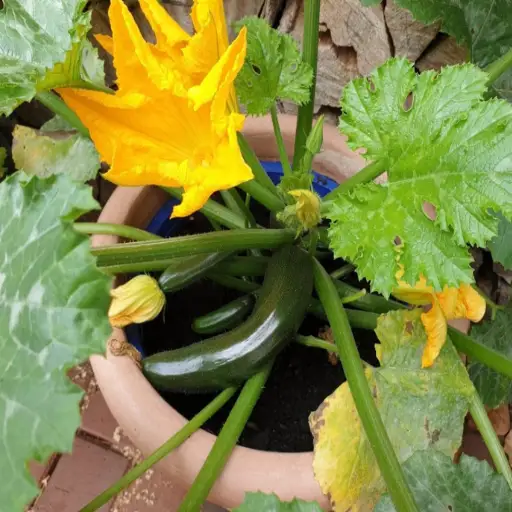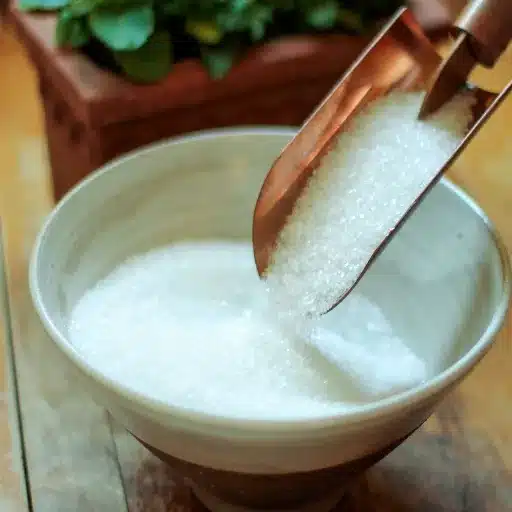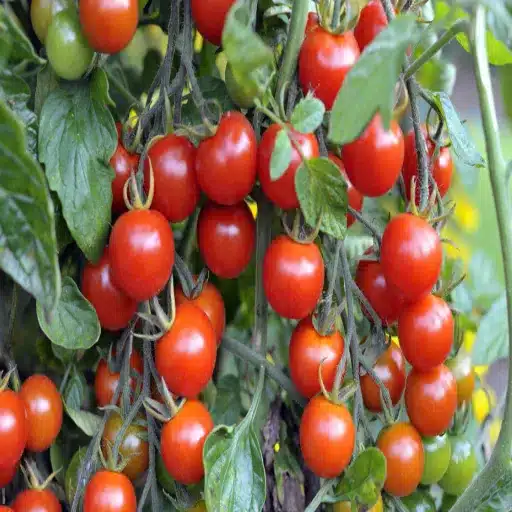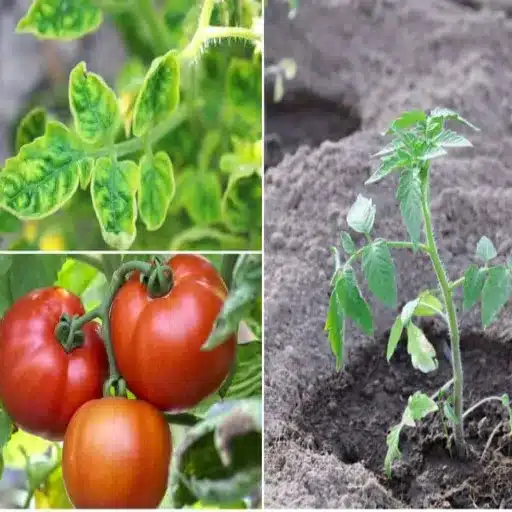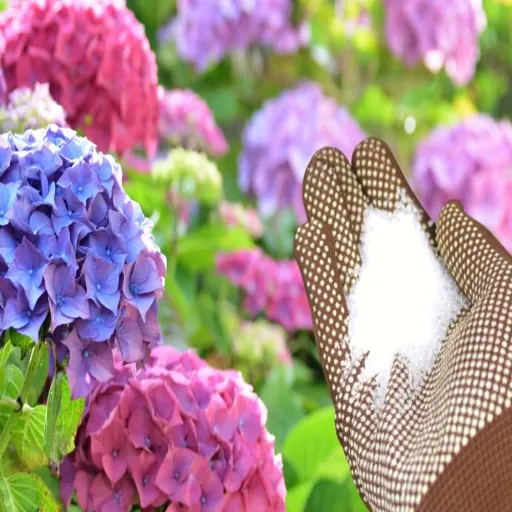Growing healthy and productive zucchini plants requires more than just sunlight and water; it demands a deep understanding of your soil’s nutrient profile. One often-overlooked yet highly effective tool in a gardener’s arsenal is Epsom salt. Renowned for its high magnesium sulfate content, Epsom salt has gained popularity as a natural method for enhancing plant growth and yield. But how exactly does it work, and why is it especially beneficial for zucchini plants? This article unpacks the science behind Epsom salt’s impact on zucchini growth, offering you actionable insights to harness its potential effectively. Whether you’re a seasoned gardener or just starting, this guide will equip you with the knowledge needed to boost your zucchini cultivation with precision.
Why use Epsom salt on zucchini plants?
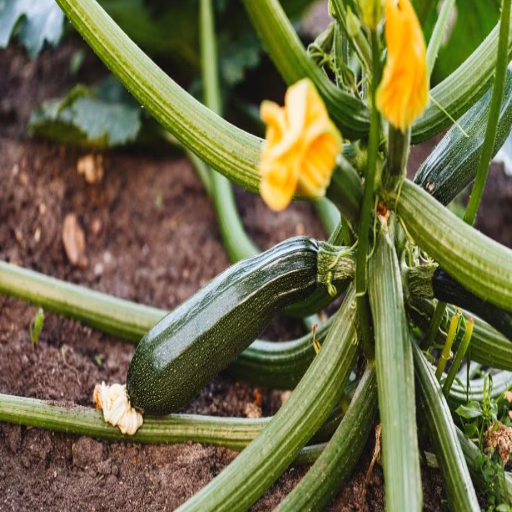
What is epsom salt, and how does it work?
As referred to in the chemical world, Epsom salt is magnesium sulfate, which is a compound of magnesium, sulfur, and oxygen. Enormous quantities of it are employed in horticulture because it is viewed as an essential factor for overall plant productivity and growth.
Magnesium is the core element as far as plant growth is concerned, due to it being part of the chlorophyll, which enables photosynthesis. Having insufficient amounts of magnesium further retards the already sluggish growth of the plants which leads to the yellowing of the leaves which in scientific terms is called chlorosis. Epsom salt contains sulfur, which further assists in the formulation of proteins, enzymes, and vitamins, which help the plants form strong cellular constructions and enhance their immunity.
Using Epsom salt on zucchini plants as a soil supplement or a foliar spray can treat magnesium and sulfur deficiencies. This helps zucchini plants to uptake nutrients better, which in turn helps to make the plants grow healthier and lusher. Since zucchini plants are heavy feeders and need to be fed a lot to receive their nutrients, these minerals will assist with vigorous leaf development and the flowering and fruiting processes. Applying the salt with the required balance guarantees that the plants fully flourish, have minimal problems related to reduced growth or stunted fruit growth, and maximize yields.
What are the benefits of using epsom salt on zucchini?
For zucchini growth, epsom salt serves as an almost instant source of magnesium and sulfur, both of which are crucial for plant development. Photosynthesis would not be possible without chlorophyll, and magnesium is crucial to chlorophyll production, for it aids in sunlight absorption. Enhanced sunlight absorption helps in energy production, making the leaves healthier and more vigorous.
Plant metabolism, flower and fruit production in zucchini plants is made possible due to magnesium’s counterpart in epsom salt – sulfur, aiding in protein synthesis. It is pivotal for boosting the yield. sudoer deficiency leads to younger leaves turning yellow and a dip in fruit development, which epsom salt can help to mitigate.
The use of Epsom salt aids in ameliorating nutrient imbalances, such as magnesium deficiency, that is prevalent in high feeding plants like zucchini through the use of soil amendment or foliar spray. It mitigates the likelihood of nutrient excesses posed to the plants while ensuring optimal growth, colorful foliage, and consistent fruiting.
How to Apply epsom salt in Your vegetable garden
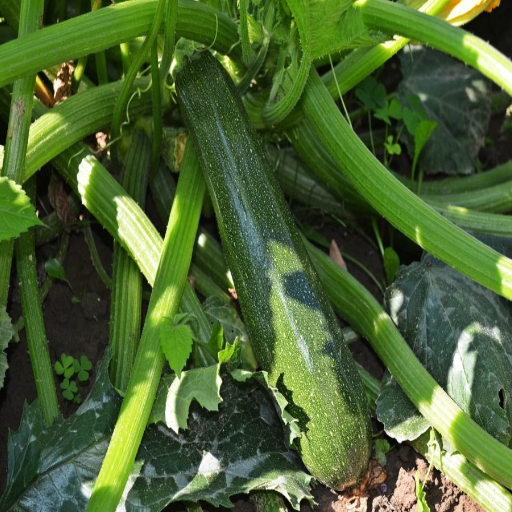
Methods for applying epsom salt effectively
- Direct Soil Application
To get magnesium more efficiently, Epsom salt can be placed in direct contact with the soil. Before planting, mix one tablespoon of Epsom salt with every square foot of soil and thoroughly blend it into the dirt. For mature plants like tomatoes and peppers, it is advisable to sprinkle Epsom salts around the base of the plant at a rate of one tablespoon for every foot of height. Care should be taken that the salts do not come into contact with the stem of the plant. Immediately watering the soil after Epsom Salt application assists in the dissolution of salt, thus helping in nutrient incorporation into the root zone.
- Foliar Spraying
Delivery of magnesium directly to the plant leaves can also be done via foliar application, which does not require any visible deficiency signs like greenish yellow color between the veins on the leaves (chlorosis). Use one tablespoon of Epsom salt to make one gallon of Epsom salt solution and apply it to the leaves. This approach guarantees that the soil nutrients are bypassed and that the nutrients required for absorption are present within the leaves. To increase effectiveness, the foliar should be done early in the morning or late in the evening to reduce the chances of evaporation and exposure to sunlight that could damage the leaves due to heating.
- Seedling Boost
Adding magnesium helps in root and shoot development in seedlings. To promote healthy growth, mix half a tablespoon of epsom salt in a gallon of water and use the solution to water the seedlings weekly. This approach protects seedlings from over-fertilization while aiding in early development.
- Blended with Compost or Organic Matter
Enhancement of synergistic nutrition in vegetable gardens can be achieved by blending epsom salt with compost or other organic materials. The idea is to add one tablespoon of epsom salt into every five gallons of compost. Once the mixture is spread over the designated planting beds, the decomposition stage will set in and will naturally liberate magnesium and sulfur, thus augmenting the soil.
- Row Treatment for Dense Plantings
In heavily populated crop areas, particularly among leafy greens, sprinkle one tablespoon of epsom salt for every foot of planting row and gently mix it into the topsoil before watering. This approach guarantees that evenly spaced plants will still receive proper nutrition in close vicinity, thus enhancing growth.
The five methods listed above will ensure that users accurately and efficiently apply epsom salt around the seedlings, facilitating better control of nutrient delivery without wastage or too much application. Remember to conduct a soil test beforehand to check for magnesium needs, so nutrient imbalance doesn’t occur.
Correct dosage: How much epsom salt per plant?
Choosing the correct dosage of Epsom salt per plant is essential for precise delivery of nutrients. For most mature plants, a common rule of thumb is to roughly use one tablespoon of Epsom salt for every foot in height, and this should be done every month. For younger plants or seedlings, it’s best to scale the amount down to about one teaspoon per plant because their nutrient needs at that point are drastically lower. Applying the dosage can be done by either dissolving it in water or by gently sprinkling it around the plant’s base. Care should be taken to ensure the salt reaches the root zone.
One of the best and most efficient methods for application is to create a foliar spray for fast absorption. This can be done by mixing one tablespoon of Epsom salt into one gallon of water. Micronutrients such as Magnesium and sulfur can then directly go through the pores of the leaves. This procedure is most beneficial for plant Epsom salt solutions, which display slow growth or yellowing leaves, which further indicates magnesium deficiency. Foliar applications, however, should be used in conjunction with soil-based applications, as the magnesium content in the soil is necessary for the long-term health of the plant.
It is vital to adjust the dosage and intervals according to the species of the plant and the type of soil. For example, vegetables such as tomatoes and peppers tend to require more magnesium and might do better with a fortnightly application, while flowering plants would only need treatment once a month. Testing the soil before planting to determine magnesium levels is necessary to avoid harming the plant due to nutrient overload or imbalance. Excessive use of Epsom salt may result in the loss of water and damage to the surrounding environment. Following the plan while observing changes in plants will help achieve a balance of nutrients for improved growth and productivity.
When is the best time to apply epsom salt?
The timing of Epsom salt application is key to ensuring optimal plant health while avoiding nutrient inconsistencies. Epsom salt, which is magnesium sulfate, should ideally be applied at the early stages of growth since magnesium is pivotal at the time for processes like chlorophyll synthesis and enzyme function. For annual plants and vegetables, applying Epsom Salt post-sowing during soil preparation helps address magnesium deficiency concerns. This application further enhances the root structure while improving the capacity of the plant to absorb nutrients as it matures.
During active growth periods, magnesium application can enhance ongoing plant care. For instance, for flowering and fruiting plants like tomatoes or peppers, the introduction of magnesium through foliar sprays every fortnight can aid in direct nutrition supply through the leaves by supplying them with magnesium. A hand liberally with a smaller grinder size around the base of flowering shrubs and perennials can also enhance them. The early hours of morning ensure lower temperature conditions, thus less evaporation, enabling better nutrient uptake during cooler parts of the day.
Consider seasonality as it pertains to Epsom salt application. It is beneficial when plants are actively growing in the warm months. Do not use it during the winter dormancy period, as plants are not metabolizing magnesium as efficiently, increasing the chances of it being wasted in the soil and contributing to nutrient pollution. This approach allows growers to take advantage of the benefits provided by Epsom salt while safeguarding the environment.
Can epsom salt prevent or treat blossom end rot?
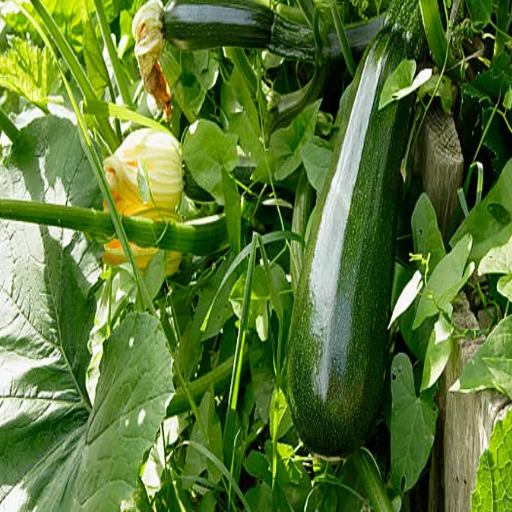
What causes blossom end rot in zucchini and squash?
Zucchini and squash are afflicted by blossom end rot primarily due to locally insufficient calcium in the fruit’s developing tissues. This problem occurs when the plant is unable to transport sufficient amounts of calcium to the fruit during the periods of rapid growth. Calcium is of critical importance for the construction and maintenance of the cell walls or the outer protective layer around the cells. In its absence, the tissue dissolving process, necrosis that is typical of blossom end rot, occurs. Soils are not always low in calcium, which may often be guarded by calcium posing environmental factors or poor cultural practices that interfere with the calcium uptake and distribution within the plant.
Environmental considerations are known to cause blossom end rot and blossom rot in overgrown conditions. One is a lack of routine or under underwater set of routines. Calcium relies on water absorption from the soil. Soil moisture needs constructive building to persist alongside calcium absorption, which leads to root effective systems. The plant community captures calcium, but clogging water drains too quickly or pops between too dry and drenched, soggy conditions. In addition, promoting extravagant nitrogen limits may be due to floral simulations over powerful leafy growth that surpasses proper fruit cultivation, aggravating advancement in restricting calcium supply.
Other factors are soil pH and root injury. Calcium is much less available in soils with a pH level lower than 6.0 or greater than 6.5. Plants absorbing calcium may be hindered if the soil is too acidic or alkaline. Additionally, damage to the roots by pests or disease, or other mechanical actions, can limit the capability of the plant to take up calcium and other nutrients. To reduce the chances of blossom end rot occurring, consistent watering, balanced fertilization, proper pH, and healthy soil are critical for the gardener.
The role of calcium and magnesium in preventing rot
Supporting a plant’s health as well as preventing disorders is something that calcium and magnesium nutrients do critically. Wrapping forms of decay is one disorder too. Both elements strengthen the plant’s defenses from environmental threats. The following is a list of benefits offered by calcium and magnesium in decay prevention:
- Cell Wall Strengthening: Cell walls of plants contain calcium pectate, which binds cells together, and calcium serves as a cell wall structuring element. Consequently, this strengthens plant tissue, making it less vulnerable to rot-causing pathogens.
- Regulation of Water Transport: Root or fruit rot caused by disorders due to excess water is mitigated with the regulated transport of water. Magnesium supports the operation of stomata, which are minute openings found on the surfaces of leaves, aiding in water transport.
- Nutrient Uptake Enhancement: Exhaustion of important nutrients is lessened as a result of magnesium and calcium. Calcium aids in nutrient circulation between plant tissues, and magnesium boosts the health and formation of chlorophyll.
- Enhancement of Tolerance to Stress: Calcium aids a plant’s resilience against abiotic stresses like salinity and excessive temperatures, which can damage a plant’s structural integrity, making it susceptible to rot. Magnesium helps in combating oxidative stress by serving as a cofactor for many antioxidants.
- Sustainable Prevention of Physiological Disorders: Calcium is directly related to disorders like blossom end-rot of tomatoes, whereas a deficiency of magnesium can result in weak photosynthetic sap production and energy reserves, which may subsequently increase tissue breakdown and decomposition.
Ensuring and regular testing of soil for calcium and magnesium, along with proper fertilization of the soil, aids in maintaining plant health and reducing rot ailments. Aligned nutrient control specific to individual species of organisms constantly remains a problem in agriculture and horticulture, primarily.
Can epsom salt be combined with other treatments?
Epsom salt’s primary use in agriculture is as a source of magnesium sulfate, and this can be used with other treatments meant to correct magnesium shortages as well as enhance chlorophyll concentration in plants. For example, Epsom salt is frequently utilized with calcium-containing amendments like gypsum to address more widespread nutrient imbalance issues.
When utilizing Epsom salt with other fertilizers, it is best to do a soil or tissue analysis first to establish precise nutrient requirements for the given application. This prevents the possibility of over-treating the plant and resulting in negative synergy between the combined treatments. Furthermore, mixing Epsom salt with organic matter or compost can improve the soil structure and microbial activity, which in turn enables or enhances the capture of nutrients.
Epsom salt may be used for foliar applications together with plant-safe fungicides or pest control chemicals, provided their pH and chemical properties are compatible. Applicants should test small quantities before full-scale application. Spraying with concentrated solutions is usually preferred due to the desired effects, but care must be taken to avoid inducing salt stress or burning the leaves. Using Epsom salt in conjunction with other specific stem treatments, under the direction of a targeted nutrient management system, enhances the effectiveness of those programs with regard to increasing plant growth and hardiness.
Addressing Common Issues with Zucchini Using Epsom Salt
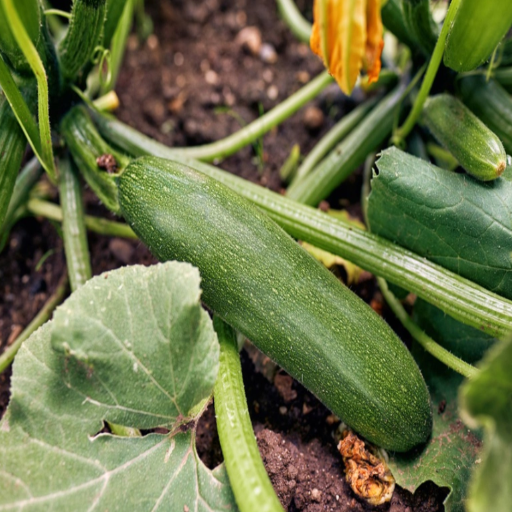
Identifying magnesium deficiency in zucchini plants
A lack of magnesium in zucchini plants is an issue that can frequently arise and one that may greatly affect the well-being and yield of the crop. Magnesium is a critical part of chlorophyll, which is the reason for photosynthesis occurring, and without it, cobbled energy hinders the charge needed for growth. The first indications of a magnesium deficiency problem usually show up as interveinal chlorosis, which is defined as turning yellow in the veins of older leaves but retaining green veins. If not tackled, the lesions may turn into necrosis, which would kill tissues of the concerned plant, further limiting the ability to carry out photosynthesis.
According to field studies, observing magnesium deficiency is frequent in plants grown in acidic soils or in pots that have a higher level of calcium, potassium, or sodium because those elements can compete with magnesium for entry. Alongside these, magnesium leaching is more common in sandy soils due to their inflexible retention of nutrients. Regular soil testing is essential in studying the magnesium content of the soil to alter the fertilizer application methods.
For addressing magnesium deficiency, Epsom salt (magnesium sulfate) treatment remains one of the most effective and popular options. Soaking about 1 to 2 tablespoons of Epsom salt in a gallon of water allows for the creation of a foliar spray that can be used. Epsom salt enhances intake via the leaves and circumvents root-related absorption issues. Alternatively, Epsom salt can be applied directly to the soil, with a recommended dosage of 1 to 2 pounds per 100 square feet of soil, depending on the nutrient deficiency. Using these treatments along with other nutrients helps maintain adequate magnesium levels and improves overall plant health and crop yields. Ensuring accurate observation of the crop, coupled with immediate remediation, helps mitigate damage to zucchini plants that could be caused by magnesium deficiency.
Dealing with pests and yellow leaves
Pests alongside yellowing leaves are issues commonly known to affect zucchini crops, which require a step-by-step method relating to problem identification and problem solving. Leaves on zucchini crops turning yellow could be linked to a myriad of different problems, such as nutritional deficits, watering anomalies, pest problems, or even some sort of infection in the form of fungus. Close monitoring of a plant’s environment alongside precise evaluation of the symptoms showing helps in finding the main problem, which is important for providing effective remedies.
When pests are the main cause of yellowing leaves, the most notable suspects include squash bugs, spider mites, and aphids. Often mistaken as a dècorative element, aphids are soft-bodied flying bugs which stick to the bottom of leaves sucking sap and leading to discolouration. Spider mites do the same by feeding on sap, but unlike aphids, they leave yellow dots and intricate webs behind. Squash bugs are the most dangerous of the three as they cause paling and extreme wilting because of the toxins they inject when feasting. Effective pest control combines two methods: one is mechanical removal, where one removes visible pests by hand, and biological control, which involves releasing aphid-eating lady beetles or spider mite-eating predatory mites. Furthermore, specific pest control can be achieved by applying horticultural oils or insecticidal soaps in the early morning or evening to the leaves so they are not burned, which also helps avoid suffocating the pests.
Apart from pests, other physiological conditions, such as waterlogging due to insufficiently drained soils, which result in root rot, can also worsen leaf yellowing. Underwatering a plant can be a stress factor and can be mitigated by inspection of moisture levels through testing and effective irrigation scheduling. In addition, under-fortifying plants with key nutrients like nitrogen and magnesium will lead to yellowing of leaves, which can be supplemented using targeted fertilizers. Having a balanced approach regarding chemical products ensures that soil nutrient levels are tested before any supplementation to avoid overuse. Along with these steps, addressing symptoms through consistent monitoring helps to alleviate the strain of yellowing leaves while improving the growth of zucchini plants. Constant monitoring of pest populations and the introduction of their natural enemies, as well as disease, is the core of integrated pest management, meaning these practices must always be in place for productive and strong agriculture.
Soil test and epsom salt adjustments
Periodic soil testing is crucial for determining nutrient concentrations, measuring pH, and evaluating soil health. It enables informed decisions to be made regarding amendments and ensures plants receive optimal growth conditions. A general soil test analyzes the amount of organic matter present as well as the macro and micronutrients. It also checks the soil pH because if it deviates from the optimal range, nutrient access and absorption are hindered. Upon performing a soil test, actions can be taken to adjust accurately any unbalances or shortcomings identified with the appropriate steps.
Its use is especially helpful when working with soils low in magnesium, which is a crucial micronutrient for aiding plant processes like photosynthesis, enzyme functions, and general plant health. Before deciding on the appropriateness of Epsom salt, the magnesium level in the soil needs to be tested either with laboratory or field examinations. The application of Epsom salt should be precise to prevent exceeding negative thresholds of salt concentration, leading to osmotic stress or nutrient antagonism. Typical methods of application involve dissolving Epsom salt in water and using it as a foliar spray or mixing it in the soil during planting.
A quick diagnostic based on soil test results can confirm if a magnesium deficiency is the causative factor, due to other nutrient imbalances causing symptoms such as leaf chlorosis or interveinal yellowing. The smart application of these amendments in conjunction with continual assessment helps avoid both the abuse of resources and environmental contamination, thus encouraging sustainable agricultural practices. Implementation of such technical approaches, paired with sophisticated monitoring devices, can enable the development of flexible and responsive systems designed to increase both soil fertility and plant yield over time.
Other Uses of epsom salt in Your home garden
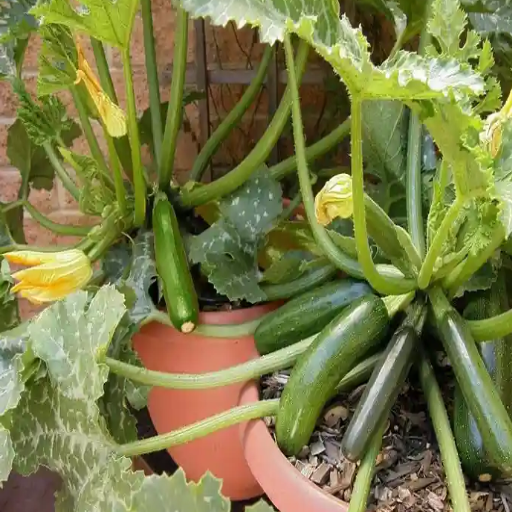
Benefits of epsom salt for other plants
- Improves Seed Germination
Epsom salt provides a magnesium boost, which improves the energy production of the seedlings. Magnesium is essential for raising the energy levels of the seedlings and aiding in their development. Studies demonstrate the adverse impact magnesium deficiency has on seeds, resulting in lower growth rates and weaker initial development.
- Increase Nutrient Maximization
Epsom salt improves the ability of plants to absorb key nutrients like nitrogen and phosphorus from the soil, which further enhances the plants’ overall health and robustness. In short, magnesium, and as its name suggests, Epsom salt, increases the absorption of vital nutrients that generate health responses in the plants.
- Significantly Improved Foliage
Epsom salt or Magnesium sulfate aids in the production of Chlorophyll, which enables photosynthesis. With the help of Epsom salt, leaves turning yellow are prohibited while improving the greenery surrounding them. It’s like topping off the flowers on the petals glued like plants. Further treating Epsom salt to say, roses aids in boosting the plant’s vitality.
- Improvement in Flowering and Fruit Production
Epsom salt also significantly benefits flowering and fruiting plants such as tomatoes and peppers by improving the magnesium concentration. Plants that require support during their flowering processes and fruit generation get a boost with magnesium. Research shows that the impact of magnesium supplementation further improves the fruit production by 20% in specific crops.
- Prevents Pest Infestations
It is thought that slugs and beetles may be repelled by Epsom salt when used around plants. Even though it is not a spectacular pesticide control approach, its composition and texture can act as a natural repellent without harming the environment.
How to enhance seed germination with epsom salt
The application of Epsom salt, or magnesium sulfate, increases seed germination as it provides magnesium and sulfur, which are crucial for plants. Magnesium is vital for chlorophyll, being the centerpiece of it, allowing the photosynthesis process to occur. Sulfur, on the other hand, is helpful for proteins and enzymes, which, together, enable the development of healthy seedling prototypes. Furthermore, seeds given a pre-treatment with Epsom salts exhibit sprouting at a greater frequency and robust growth because the nutrients supplied enable cellular development and enzymatic reactions necessary for cellular processes. Also, because it is water soluble, it can easily be absorbed into the soil for plants to uptake, making it more advantageous.
For the enhancement of Epsom salt during germination, infuse one gallon of water with a dosage of one tablespoon of Epsom salt to make a solution rich in nutrients. Furthermore, it can be employed in dwelling strategies by spraying lightly onto soil before planting or soaking seeds for several hours. Diseases accompanied by low Epsom salt application are also put to a stop, as a high supply of magnesium interferes with calcium and potassium, causing dysfunctions like nutrient imbalance to emerge within the soil. Lastly, the balance of the concentration paired with the application method will optimize the desired outcome.
Research indicates that using Epsom salt during the germination process can greatly enhance seed viability and seedling growth, especially in high-magnesium crops like tomatoes and peppers. Two recent field trials showed that Epsom salt-treated plants displayed greater resilience to stressors such as nutrient deficits and adverse environmental conditions. This implies that incorporating Epsom salt into the gardening practices of professional horticulturists can result in more dependable and productive yields, showcasing the usefulness of Epsom salt as an affordable and sustainable agricultural resource.
Creating a nutrient-rich compost with epsom salt
Commonly recognized as magnesium sulfate, Epsom salt augments the quality of compost by adding vital nutrients that strengthen plant life. Supplements of Epsom salt amplify the magnesium content of compost, which is critical for aiding photosynthesis as well as assisting in chlorophyll formation. Soil that is lacking in magnesium tends to cause stunted growth and yellowing of leaves, issues that can easily be resolved by using Epsom salt during the composting process. Sulfate, the other active compound in Epsom salt, enhances soil acidity, which may benefit nutrient absorption within alkaline soils and enhance the overall value of the compost.
Optimal results will be achieved with the addition of Epsom salt into compost when existing protocols are carefully followed. It is well known that the optimal amount of salt depends on the amount of organic material used during composting. However, one standard approach is to add Epsom salt at a rate of one to two cups for every cubic yard of composting materials. It is critical to blend the salt adequately throughout the compost pile, as mixing it only on top or at a single spot will cause salt to be concentrated in a single area, and this mixing strategy will induce several nutrient deficiency problems. During the layering stage, Epsom salt can be added together with “green” materials like fruit peels and vegetable scraps or “brown” materials like dried leaves and cardboard to ensure that salt is properly distributed throughout the compost and to accelerate decomposition.
Research both in the laboratory and in the field demonstrates that Epsom salt promotes higher microbial activity within compost piles, which aids in the process of composting. Magnesium and sulfate act as secondary nutrients for the microorganisms responsible for decomposition, thereby accelerating the process of breaking down organic materials into nutrient-rich humus. In addition, researchers have observed that compost, which is supplemented with Epsom salt, has higher nutrient content in the final product, thus offering an organic supplement that improves soil fertility when used.
References
Frequently Asked Questions (FAQ)
1. What are the benefits of using Epsom salt for zucchini plants?
Epsom salt, which contains magnesium sulfate, supports healthy zucchini growth by enhancing photosynthesis, improving nutrient absorption, and potentially increasing fruit production. Magnesium is an essential element for plants, helping them produce lush leaves and vibrant fruit.
2. How do I apply Epsom salt to my zucchini plants?
The most common methods are sprinkling or dissolving it in water:
- Sprinkling: Evenly spread about 1 tablespoon of Epsom salt around the base of each plant, avoiding direct contact with the stem.
- Foliar spray: Dissolve 1 tablespoon of Epsom salt in 1 gallon of water and spray the solution on the leaves to address magnesium deficiencies.
3. How often should I use Epsom salt on my zucchini plants?
Apply Epsom salt every two to four weeks during the growing season. Overuse may lead to nutrient imbalances, so less frequent application is generally safer.
4. Can Epsom salt prevent common zucchini plant problems?
While Epsom salt can help address magnesium deficiencies and support overall plant health, it does not prevent issues like pests, diseases, or blossom end rot caused by calcium deficiency. Ensure your plants receive balanced nutrients and proper care.
5. What are the signs my zucchini plants need Epsom salt?
Common indicators include:
- Yellowing leaves with green veins (magnesium deficiency).
- Reduced fruit production or stunted growth.
Test soil magnesium levels before application to confirm the need.
6. Can I mix Epsom salt with fertilizers or other soil amendments?
Yes, Epsom salt can complement fertilizers by providing magnesium. However, check soil test results to avoid overloading nutrients, which can harm growth.
7. Are there risks of using too much Epsom salt?
Excessive Epsom salt can lead to nutrient imbalances, such as reduced calcium or potassium availability, potentially harming your plants. Always follow recommended application rates and test the soil beforehand.
8. Can Epsom salt be used in all soil types?
Epsom salt is most beneficial in magnesium-deficient soils. Sandy or acidic soils often lack magnesium, making Epsom salt a suitable supplement. Avoid use in soils that already have adequate to high magnesium levels.
9. Is it okay to use Epsom salt in container-grown zucchini plants?
Absolutely! Use the same application rates as for ground-planted zucchini, but monitor your plants more closely since nutrients can deplete more quickly in containers.

